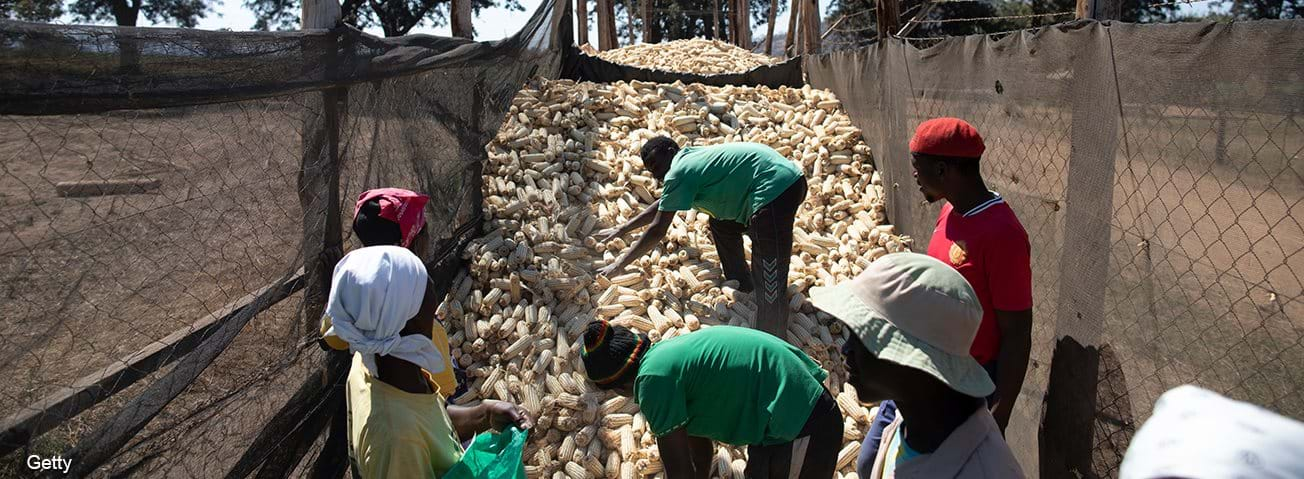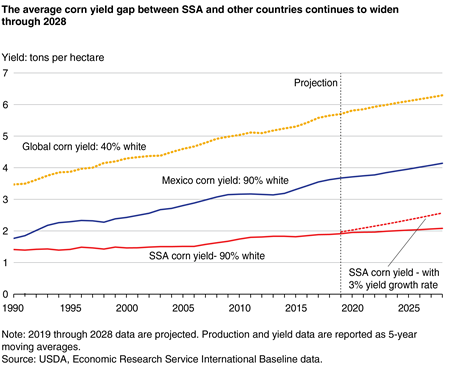Low Growth in Corn Yields Has Dragged Down Sub-Saharan African Corn Production

Sub-Saharan Africa (SSA) has one of the lowest average corn yields in the world, which contributes to the region’s low level of corn production. Given the significant food insecurity experienced in SSA, the ability to expand corn production has important regional implications. Unlike most other geographic locations where yield growth rates are the major factor for increased production, increasing area harvested accounts for two-thirds of the growth in corn production in SSA.
One factor explaining the low level of corn yield in SSA is white- and yellow-corn composition. Corn production in SSA is composed of 90 percent white corn, which is predominantly used for food consumption. White-corn yields are comparatively lower than yields associated with yellow corn. Mexico is another country that produces mostly white corn. Using historical data and USDA’s 10-year projections, researchers compared yield levels and growth rates between SSA and Mexico.
In the early 1990s, the average annual corn yield in SSA was 1.4 tons per hectare. Comparatively, Mexico exhibited an annual average yield of 2 tons per hectare during the same period. Since then, average corn yields in SSA grew by 1 percent per year and reached 1.9 tons per hectare in 2018. During the same period, Mexico’s corn yields grew 3 percent per year over the last three decades and reached 3.6 tons per hectare in 2018.
For the SSA region, the USDA International Baseline 10-year projections indicate a continuation of low corn-yield growth through 2028. The average annual corn yield is expected to grow 1 percent per year from 2019–2028 and will reach 2.1 tons per hectare in 2028. In comparison, Mexico’s average annual corn yield is projected to grow 1.3 percent per year from 2019–2028 to reach 4.1 tons per hectare in 2028.
The widening yield gap between the SSA region and other countries indicates that SSA has lagged behind higher yield countries in the adoption of new technologies and best agricultural practices (such as selecting high-yielding seed varieties and performing crop rotation with nitrogen-fixing legumes). However, if SSA adopts these technologies and practices, the comparatively low yield levels can present an opportunity for growth. If, for instance, SSA’s average annual corn yield increases by 3 percent per year—similar to what Mexico experienced for the last three decades—the region could annually produce an additional 10 million tons of corn in each projection year.
USDA Agricultural Projections to 2028, by Erik O'Donoghue, James Hansen, and David Stallings, ERS, March 2019


